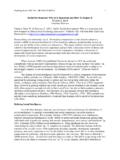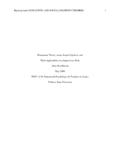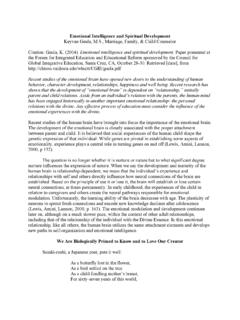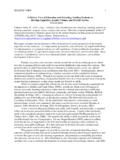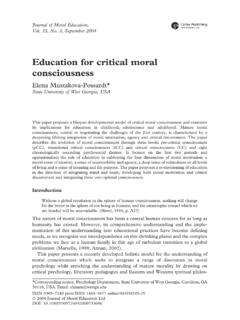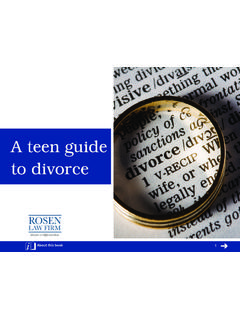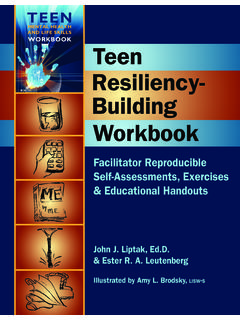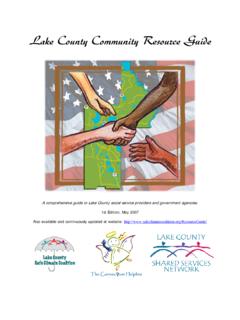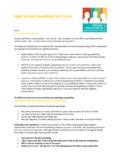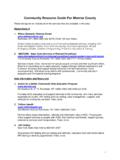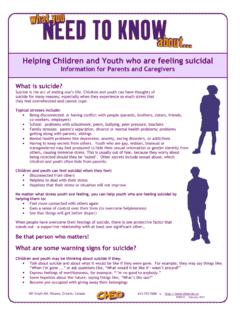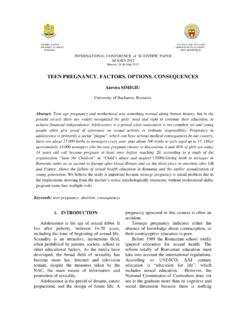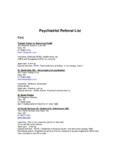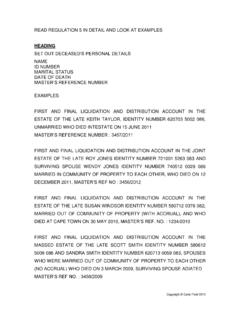Transcription of An Overview of Family Development - Abnl
1 Family Development 1 An Overview of Family Development Jade A. Enrique, Heather R. Howk, and William G. Huitt Citation: Enrique, J., Howk, H., & Huitt, W. (2007). An Overview of Family Development . Educational Psychology Interactive. Valdosta, GA: Valdosta State University. Retrieved [date], from The Family is the smallest unit of a society and, therefore, critical to its Development and maintenance. There are four major issues in the Development of a Family : mate selection, spousal relationships, parenting, and change.
2 This paper reviews the literature regarding the importance and current state of the Family , the four major issues related to Family Development , and some activities that educators and parents can implement in order to prepare children and youth for Family responsibilities. The paper also discusses ways to measure student s successful Development in these areas. Despite the historic centrality of the nuclear Family unit (mother, father, first-born), there are several definitions of Family . According to the Population Reference Bureau (2000), Family can be a group of people held together by birth, marriage, or adoption or by common residence or close emotional attachment.
3 Families may include persons who claim decent from common ancestors in a lineage, a tribe or a clan (para. 12). Although marriage often signifies the creation of a Family , unofficial joining together endorsed neither by church nor state, are quite commonplace. According to Ooms (as cited in Patterson, 2002), families serve several important functions for society. Some of these functions are: Family formation and membership, economic support, nurturance and socialization, and protection of vulnerable members. However, Levine (as cited in Shaffer, 2000) states that the three basic goals that families have for their children are: survival, economic self-sufficiency, and self-actualization.
4 These three goals are symbolic of various cultures. This shows that although there are several differences in the types of families in the world, they have certain things in common. It is the job of educators to examine the characteristics of families in order to foster most advantageous Development in the children they serve (Christian, 2006). A Changing World The Family system is a basic unit of society that has evolved along with changes in the needs and demands of the individuals and society (Kozlowska &Hanney, 2002).
5 As the smallest social unit of society, the Family has been instrumental to the Development of cultures and nations. The extended Family was the first social unit in the nomadic hunter/gatherer age and grew into families within tribes. The agricultural age somewhat modified the social organization (Bianchi and Casper, 2000), but what did not change until the industrial revolution was the clear connection of children and parents to a larger unit of tribes or clans. The industrial age in western society and modernity brought a decreased connection with the extended Family in many cultures.
6 An increased responsibility on the husband to generate income as a worker outside of Family unit became the norm (Toffler & Toffler, 1995). In recent decades, women have joined the workforce in record numbers, putting increased pressure on both adults to provide the economic resources for the Family . Family Development 2 In advanced industrialized societies, the fate of the nuclear Family is of concern to many researchers, government officials, and citizens. Commentators ask if the Family is falling apart or merely evolving into a new form (Wrigley, 2004).
7 Indicators of Family disequilibrium, such as divorces and the number of children being raised in single-parent families, are rising alarmingly. A discussion of preparing children and youth for the establishment and maintenance of a Family cannot avoid these issues. Instead, relevant literature must be surveyed to clarify the issues and provide insights on how they may best be addressed. Certainly the Family has been the primary social institution for the raising of children. These children need love, support, nurturing, and discipline.
8 In traditional westernized nations, this was thought to be best provided in a two-parent married Family existing within an extended Family structure (Bianchi and Casper, 2000). The two-parent nuclear Family then became the prototype with the woman leaving her relatively low-paying job she got after (or before) finishing high school and taking care of children. She did this while her husband held a steady job that paid enough to support the entire Family . Popularized as the American 1950 s-style traditional Family , around 75% of school-aged children had a parent at home full time.
9 Family structures of this type had to support distinct gender roles and the economy had to be vibrant enough for a man to financially support a Family on his own. Government policies and business practices supported this Family type by reserving the best jobs for men and discriminating against working women when they married or had a baby. In the United States, the 1960 s civil rights and feminist movements resulted in a transformation in attitudes towards Family behaviors (Evans, 2004). People became more accepting of divorce , cohabitation, and sex outside of marriage and less sure about the permanence of marriage.
10 They became more tolerant of blurred gender roles, of a mother working outside of the home, and a variety of living arrangements and life styles. The transformation of these attitudes accelerated in the 1970 s and 1980 s. Consequently, the percentage of children with a full-time parent at home dropped somewhat in the late 1970 to around 57% and is now only around 25%. A new ideology emerged during these years that stressed personal freedom, self-fulfillment, and individual choice in living arrangements and Family commitments.
